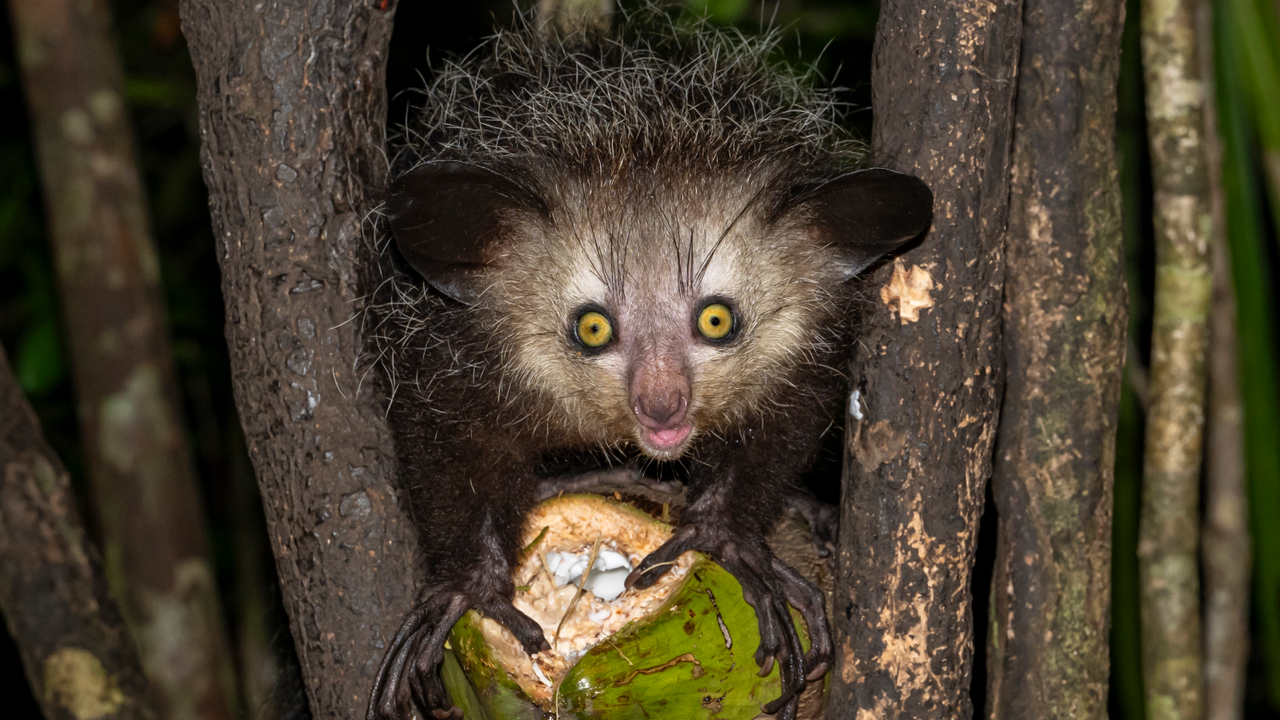Now Reading: Meet the Aye-Ayes: Nocturnal Lemurs with Peculiar Fingers
-
01
Meet the Aye-Ayes: Nocturnal Lemurs with Peculiar Fingers
Meet the Aye-Ayes: Nocturnal Lemurs with Peculiar Fingers

Speedy Summary
- Species Name: Aye-aye (Daubentonia madagascariensis).
- Habitat: Endemic to Madagascar rainforests; endangered status.
- Diet: Consumes seeds, nuts, fruits, nectar, plant matter, fungi, insect larvae, and honey.
- Physical Characteristics: Nocturnal lemurs with large round eyes, bat-like ears, rodent-like teeth that grow continuously, long bushy tails longer than their bodies.Adults have yellow-brown fur with white tips. They weigh around 4 pounds (~1.8 kg) and measure up to 24 inches (~60 cm) from nose to tail tip.
- Behavior: Aye-ayes build spherical nests from leaves during the day and forage through treetops at night using their elongated middle fingers for food detection via sound tapping and extracting wood-boring insect larvae from trees using ball-and-socket finger joints. They also use these fingers for unconventional tasks like nose-picking described as possibly aiding dental health by preventing bacteria adhesion due to mucus consumption (2022 Journal of Zoology study).
- Cultural Significance in Madagascar Folklore: associated with omens of death; superstitions result in hunting on sight contributing to population decline. Originally thoght extinct but rediscovered in the wild during the 1950s.
- Defenses Against Predators (e.g., fossas): Rely on stealth aided by dark fur camouflage; acute hearing detects predators’ movements; agile climbers capable of rapid escape.
indian Opinion Analysis
The aye-ayes represent a interesting example of ecological specialization within endemic species found outside India but share significant conservation parallels with India’s own biodiversity challenges-such as human-wildlife conflict driven by cultural myths surrounding certain animals (e.g.,owls or snakes in Indian folklore).The aye-ayes’ plight highlights how superstition-driven persecution threatens vulnerable populations worldwide and underscores the importance of coexistence initiatives rooted in community education.
Additionally, the research detailing aye-ayes’ unique adaptations may inspire curiosity about evolutionary mechanisms or raise interest among Indian researchers exploring native nocturnal mammals exhibiting unusual survival strategies-India being home to species reliant on camouflage and specialized feeding behaviors.
This article serves as a reminder that preserving such species not only protects biodiversity globally but enriches cross-cultural understanding through science advocacy addressing wildlife-myth intersections effectively across borders like India while raising public awareness against extinction-linking practices globally!


























